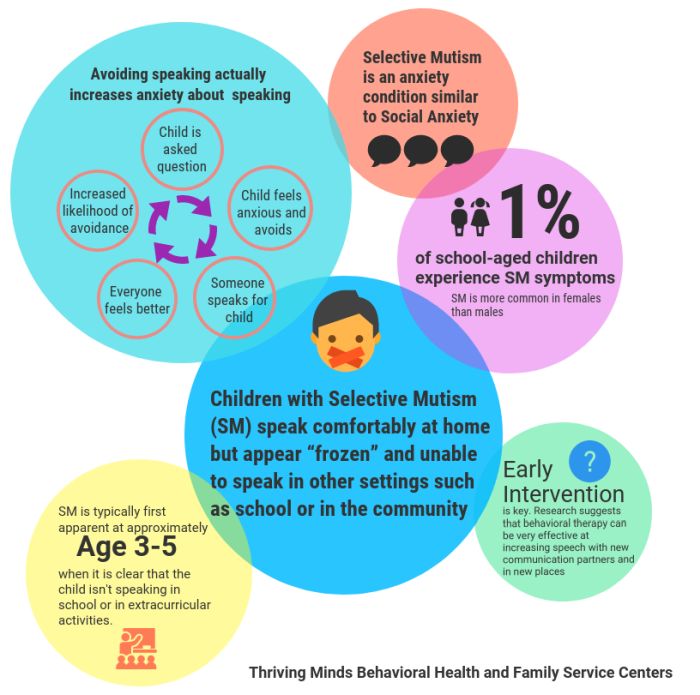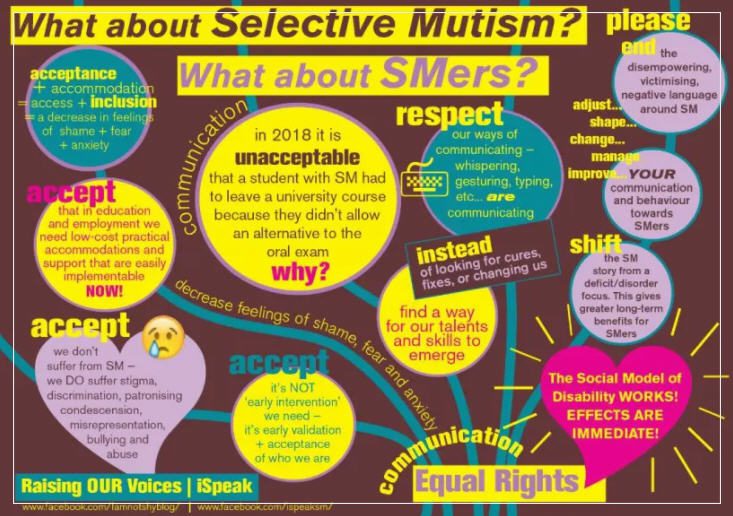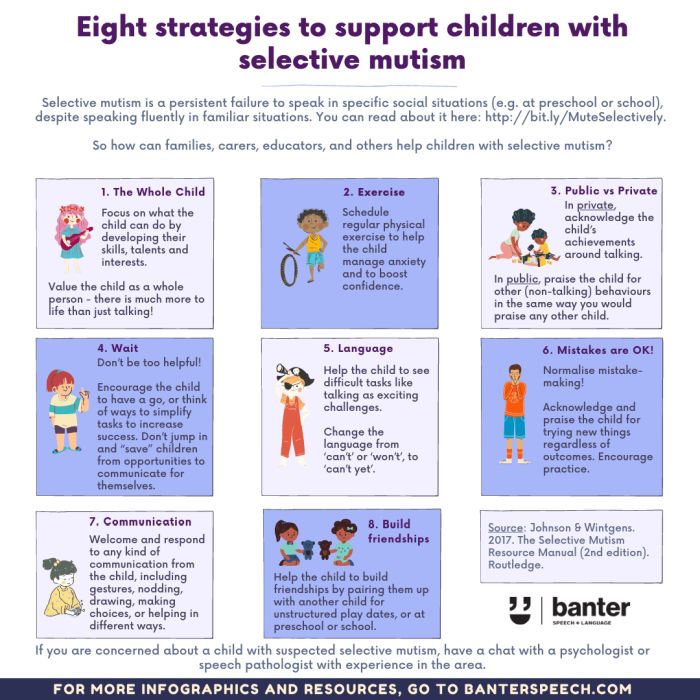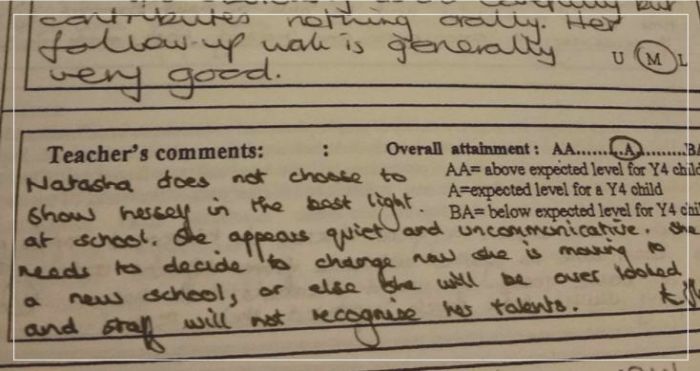Shy students are common in the classroom, and most teachers get very good at drawing them out. Sometimes, though, it’s not just about shyness. Selective mutism (sometimes called situational mutism) is a more complex issue and one that any teacher may face someday.
A few years ago, one teacher shared her experience on the WeAreTeachers HELPLINE Facebook group. “I have a little girl who spoke maybe four words all last year while in kindergarten, and now that she’s in first grade is not yet talking,” this teacher shared. “She talks to her friends. She talks to her family. Once, she almost talked to me, half accidentally. Anyone had experience with this?”
Fortunately, some others did have experience with this kind of thing and suggested that it sounded like a classic case of selective mutism. Here’s what teachers need to know about this anxiety disorder.
What is selective mutism?
First, here’s what it’s not. Selective mutism is not willful disobedience—the child is not choosing this behavior. It’s not just a bit of shyness that will wear off when the student grows more comfortable in a week or two. It’s not a child who just likes peace and quiet or even one who is introverted. (See more myths about selective mutism here.)

Selective Mutism Facts: Thriving Minds
So what is it? The Mayo Clinic’s website defines selective mutism (SM) as an anxiety disorder characterized by “a consistent failure by children to speak in certain situations, such as school, even when they can speak in other situations, such as at home with close family members.”
In general, this behavior needs to be seen consistently for at least one month before a diagnosis can be made. (This month does not include the first month of school, which is a stressful time for every child.) Selective mutism is believed to occur in about 1% of children, is more common in girls than boys, and is often diagnosed when children begin school. Learn more from the SMart Center here.
[contextly_auto_sidebar]
But they’ll talk if they really need to, right?

Probably not. Think of selective mutism more like a switch that is flipped in certain situations. At home, or with friends, this child is usually talkative and often outgoing (this is an important distinction between selective mutism and autism).
But when put into an unfamiliar social situation, with new faces and new expectations, the switch flips and speech simply stops. (This is why it is sometimes referred to as “situational mutism.”) The child cannot control this behavior; in fact, they often want desperately to speak but feel unable to. For instance, it’s not unusual for a young child with SM to wet their pants rather than ask to use the bathroom.
This anxiety disorder doesn’t just affect young children. Read one high school student’s vivid account of daily life with SM here.
Obviously, this has enormous impacts on a child’s performance in school. Teachers who suspect selective mutism should immediately talk to the student’s parents and previous teachers, as well as schedule time with a school counselor. Students diagnosed with SM may qualify for an IEP/504 plan and need certain accommodations to help them succeed.
What strategies and accommodations work?

Selective mutism is a complex disorder, and no one treatment will work for every child affected. This is why it’s important to involve an expert whenever possible. The recommendations listed here are not intended to replace expert advice but may offer some possible ideas to help teachers dealing with this issue in the classroom. (If you’re helping to compile an IEP/504 plan, click here for a detailed list from the Selective Mutism Organization.)
Provide warm-up time.
Kids with SM often chatter comfortably with adults and kids they already know, but new environments and unfamiliar faces stimulate their silence. Allow the student to arrive early, say 30 minutes before the other kids, and spend some time in the classroom alone with their parents. Gradually, the teacher can fade into this warm-up time, becoming a familiar and comforting face.
Try nonverbal strategies.
Don’t allow SM to keep a child from participating and learning. Allow them to use thumbs up/thumbs down, pointing, nodding, and other non-verbal communication skills as needed. For older students who can write, some teachers find success with whiteboards, where the student writes their question or response rather than speaking it out loud.
Use the buddy system.
Some kids with SM can use a friend to help them communicate. Again, this isn’t the ultimate solution, but it will help them stay engaged. Allow them to sit close together and talk quietly from time to time. This may increase the comfort level for the child with selective mutism. Some teachers also note that kids with selective mutism do well in small groups with other students they already know. Teachers can discreetly observe the small group work to get a better idea of what the student knows.
Allow support.
A therapist or intervention specialist that the child knows and feels comfortable with can be a valuable addition to the classroom from time to time. They can help the child continue practicing behaviors they’ve worked on in therapy and give you as a teacher better coping strategies too.
Use alternative assessment methods.
“But how can I know if a child can read if I can’t hear them do it?” you might wonder. This is the kind of situation where you may need to get creative. For example, ask a parent to video the child at home reading out loud.
What doesn’t work?

Many well-meaning adults think they can simply force or shame a child with selective mutism to talk or assume “they’ll talk when they’re ready.” Both of these strategies can actually be harmful. Here are a few behaviors teachers should avoid.
DON’T exclude them from classroom activities.
The student should participate in all classroom activities, even those that require talking. Find non-verbal strategies to accommodate them as needed.
DON’T call attention to them when they do or don’t talk.
Students with SM want to feel “normal” and are more likely to speak when they’re completely comfortable. Calling attention to their inability to speak, or even recognizing them publicly when they do speak, can cause them severe discomfort. Avoid saying things like, “I just want to hear your voice!” or “I’ll know you trust me when you decide to talk to me.”
DON’T assume they’ll speak up if they “really” need something.
You can’t force someone with SM to talk by ignoring them or figuring that they’ll find a way to tell you if it “really matters.” Actively seek ways to communicate with the child about important things, like bathroom breaks, feeling ill, or not understanding the lesson.
Selective Mutism Resources
The information provided here is only a very brief overview of a complicated anxiety disorder. Teachers who encounter selective mutism in their classrooms should spend some time exploring more detailed resources. Here are a few to get you started.
Online
- Selective Mutism: A Comprehensive Overview, by Dr. Elisa Shipon-Blum (selectivemutismcenter.org)
- Selective Mutism Association: Education Planning, IEP, IDEA, and 504 (selectivemutism.org)
- Selective Mutism Resources for Teachers (selective-mutism.com)
Books
(WeAreTeachers may collect a share of sales from these links.)
Try these selections for further research into understanding helping students with selective mutism.
- The Selective Mutism Resource Manual: 2nd Edition (Johnson/Wintgens, 2017)
- Selective Mutism: An Assessment and Intervention Guide for Therapists, Educators & Parents (Kotrba, 2014)
Share these books with other students to help them understand SM.
- Maya’s Voice (Cheng, 2013)
- Why Doesn’t Alice Talk at School? (Nathanson, 2019)
- Can I Tell You About Selective Mutism? (Johnson/Wintgens, 2012)
- Selective Mutism in Our Own Words (Forrester, 2015)
Do you have advice for teachers who encounter selective mutism in the classroom? Come and share in our WeAreTeachers HELPLINE group on Facebook.
Plus, what students with autism want you to know.


